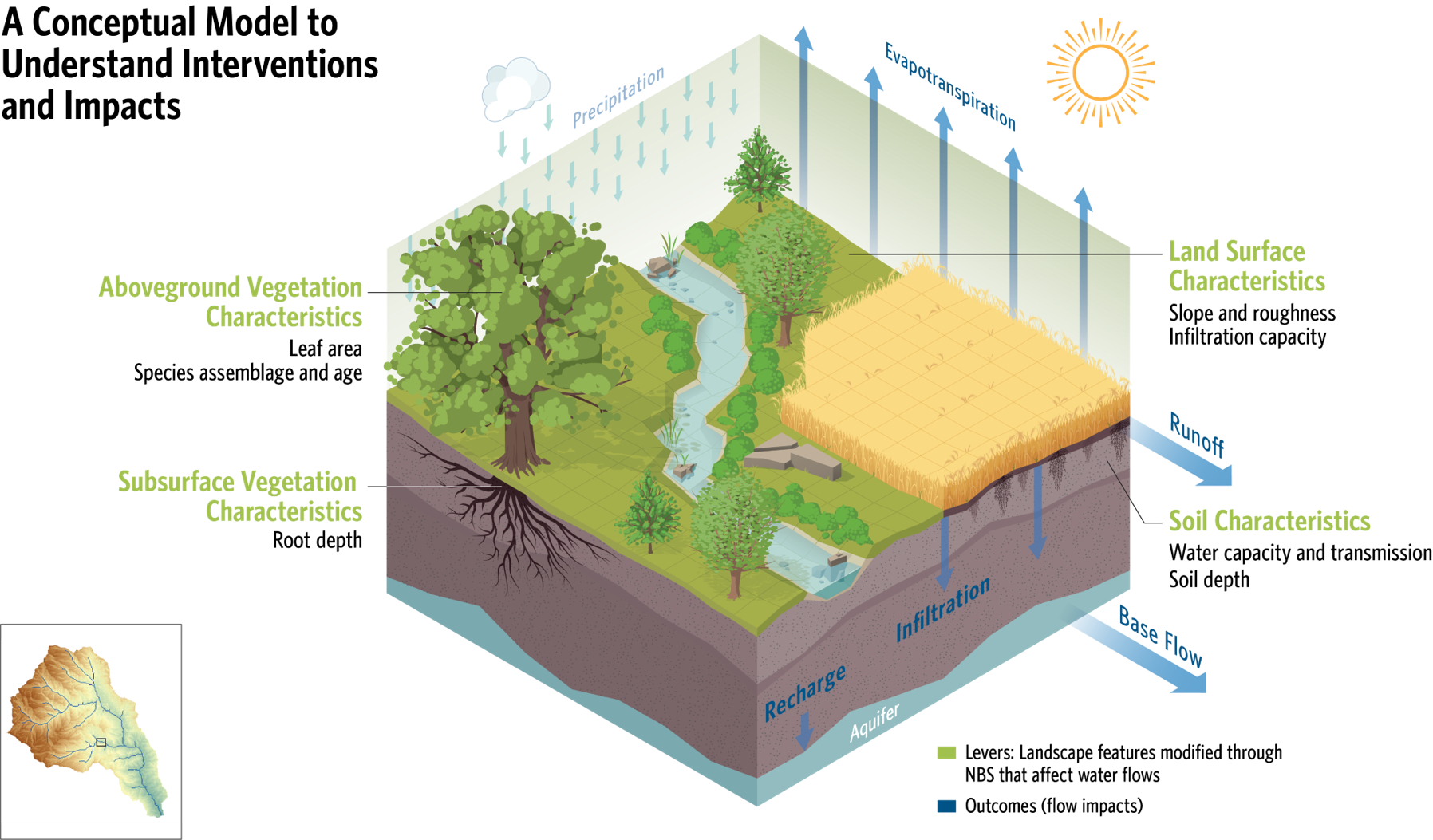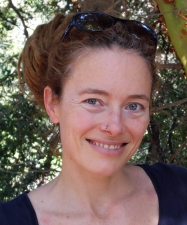Teams Like This
Maintaining reliable freshwater flows is essential for human health and well-being, sustainable economic development, and ecological integrity. This means a minimum amount of water in our rivers and streams during dry seasons, and high flows that are within natural ranges of variation during wet seasons. Floods and droughts are expected to increase with continued shifts in climate. To effectively implement the right actions in the right places in specific watersheds, we need to understand how and where different source water protection actions can contribute to achieving reliable freshwater flows.
OUR APPROACH: To address this issue, this team brings together hydrology and adaptation experts to examine the science, and then work with stakeholder group representatives to interpret the meaning of that science through the lens of those groups: downstream utilities and municipal managers, humanitarian groups working with upstream communities, and aquatic ecologists.
This project is funded in part by the Gordon and Betty Moore Foundation through Grant GBMF7100 to The Nature Conservancy to support the work of the Science for Nature and People Partnership (SNAPP).

A review of the empirical evidence
Our research confirmed that context matters. Surface and groundwater resources (in locations & quantities where people can take advantage of them) are generated by a complex interaction of weather, vegetation, soils, geology, and terrain, and nature-based solutions can only influence some of these factors. Restoring forests and wetlands can often help to reduce peak flows, and implementing best practices in production lands can improve water retention in soils, making them more drought-resistant.
Information gaps
We found that most field studies are not measuring and tracking the right metrics at a scale to match the ambition of proponents of nature-based solutions. Existing evidence helps with predictions of how small-scale projects can affect local water cycling in some geographies, but we still have a lot to learn about how a growing number of small-scale tree-planting efforts or other commonly promoted nature-based solutions in agriculture or rangelands will scale up to influence regional downstream water flows.
Some basic guidance
The science is clear that protection of intact natural ecosystems is much more effective at delivering water security benefits than restoring an ecosystem once it’s been lost. We also know that the scale of implementation needs to match the scale of ambition — we cannot expect to improve water security for downstream populations or industries through small investments in nature upstream. If we invest as much in the science-based design of specific nature-based projects as we would in conventional engineered water infrastructure, we can make informed decisions with the best combination of approaches.

“To scale up smart and effective investment in nature-based solutions for water security, decision makers need a more clear understanding of expected impacts, based on real-world evidence. This SNAPP group provides a view into that evidence and packages it for people who don’t have a degree in hydrology.”
– Adrian Vogl, Project co-Leader
This slide deck provides a high-level summary of this SNAPP project’s findings.
Watch a recording of an online session with contributions from team members.
Edited volume from 2021 with a chapter informed by this project’s findings.
Evidence of impacts on water flows for both forest and wetland protection & restoration, and agriculture & rangeland management practices.
A hard look at the published evidence on what happens to water flows when common nature-based solutions are implemented is relevant for public policy
The Nature Conservancy
Natural Capital Project and The World Bank Group
Conservation International
Global Environment Facility
Catholic Relief Services
World Wildlife Fund
Oxfam
Pacific Institute
Lawrence Berkeley National Laboratory
ForestTrends
Alliance for Global Water Adaptation
University of Minnesota
WaterNow Alliance
Global Impact Investing Network
University of Queensland
Stanford University
Blue Forest Conservation
Catholic Relief Services
Inter-American Development Bank
River Futures
U.S. Geological Survey
Ceres
The Nature Conservancy
World Resources Institute
Natural Capital Project and Stanford University
University of California, Berkeley
University of Victoria
WaterAID
Condesan
LimnoTech
The World Bank
Imperial College